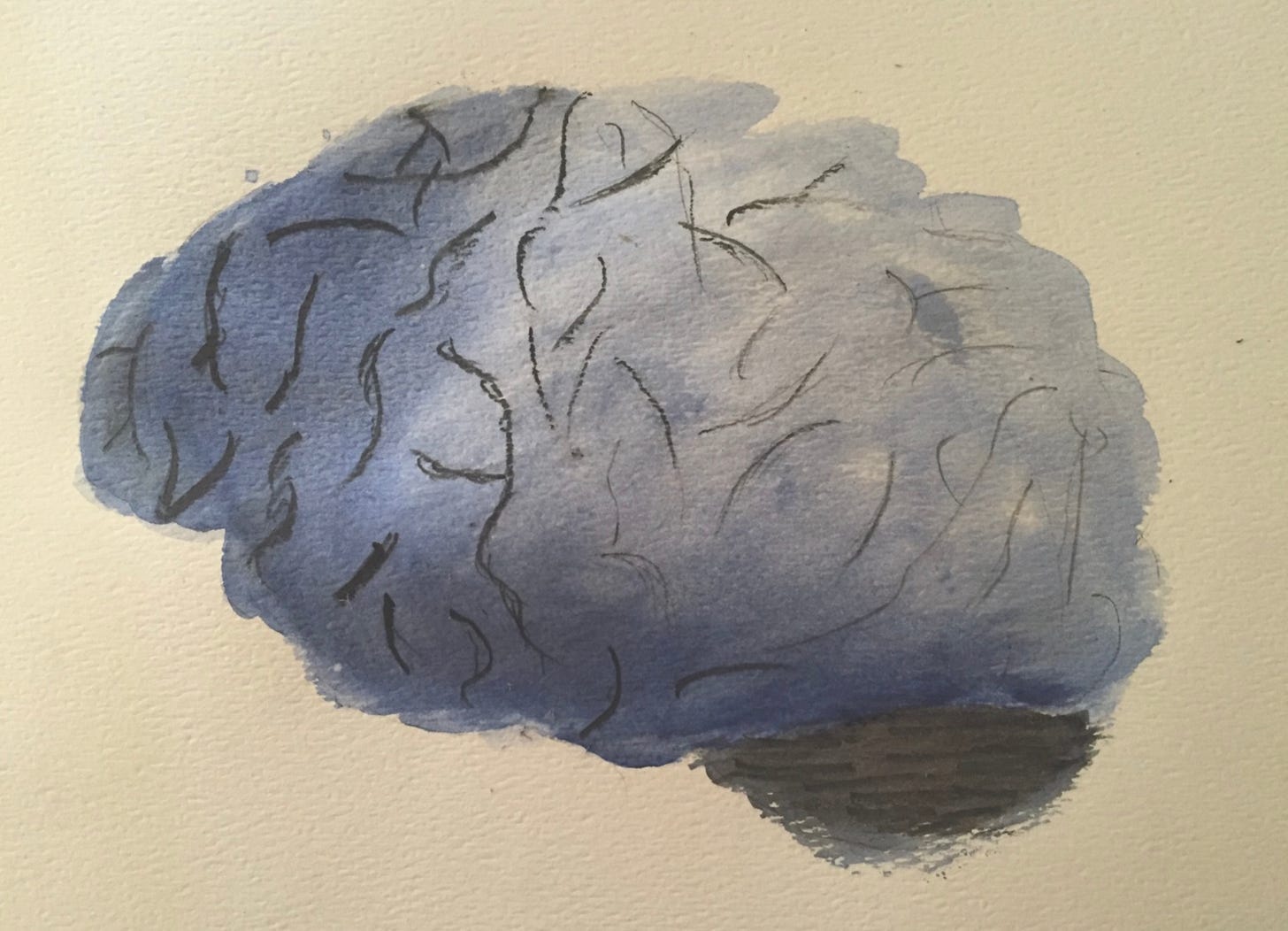Living with Generative AI
ChatGPT, Midjourney, a brain injury, and how AI impacts productivity and creativity
In December 2015, I fell six feet off a slippery stage and onto my forehead. A brain injury left me with constant headaches and nausea exacerbated by just thinking. At times, I couldn’t form complex sentences without triggering pain. Losing my intellectual agency was at first incomprehensible, and later impossibly demoralizing. I know what it’s like to lose brain power.
Thanks to generative AI, I have now felt what it’s like to gain some.
Language Models
I can envision AI’s coming impacts most clearly in my own field. For now, the use cases I’ve found applied to my workflow are still on the periphery. I’ve used OpenAI products to copy edit, generate titles, smooth transitions, condense text, and rewrite sentences. Occasionally ChatGPT has delighted me by like pointing out flaws or extensions I could make to arguments, explaining a difficult concept to me and saving me from wading through Google.
ChatGPT today is the worst large language models (LLMs) will ever be. LLMs improving wildly fast. Not only will LLMs make me a better writer, but very soon they’ll open up new research paths previously outside of my methodological comfort zone. Tailored literature reviews will lower the barrier of entry into new fields. Complex data gathering and analysis will be available to people who haven’t spent years learning to code. Even more exciting, new modes of analysis impossible without AI tools will soon open up.
The internet has done the same, of course, but it came on slowly. With today’s AI developments, in the coming months, my productivity will double.
I have no idea how long it will take before a computer can outclass a human and computer pairing when it comes to research. That world is one I struggle to envision, but in the meantime, I’m thrilled to soon live when anyone with access to inference will be able to do radically more, radically better.
(For anyone who is or has loved ones going through a brain injury, I wrote up a blog about my experience that might help you on your journey).
Image Models
With my day job at a China-focused research firm and nights plus weekends filled with making ChinaTalk, I spend a scary portion of my waking life thinking about modern China. Living like this in 2022 grew increasingly bleak. With the important exception of the incredible bravery displayed in the November protests, most of the narratives occupying my mindshare have been deeply depressing (the Party Congress, lockdowns, Xinjiang, the war in Ukraine, talk of war in Taiwan…).
Engaging with AI was a respite from all this. ChatGPT allowed me to imagine possibilities. Playing with Midjourney, a product that turns text into images, was simply joyous.
This riff by Ira Glass of This American Life has stuck with me:
Most everybody I know who does interesting creative work went through a phase of years where with their good taste, they could tell what they were doing wasn’t as good as they wanted it to be… it didn’t have that special thing they wanted it to have… Everybody goes through that phase… and the most important thing you can do is do a lot of work.
There are many mediums of creation I would love to explore beyond podcasting and policy writing. Yet due to Ira’s “taste gap,” time constraints, and a general lack of talent, I simply have not been able to. I cannot wait for the world where AI will allow me to write a screenplay, produce a rap beat, and create a video game. These tools are on the verge of becoming appendages–at least if not more important than the internet itself–in altering how we work and live.
This realization happened most tangibly for me with Midjourney. I have a vivid memory from kindergarten of having an image of a cartoon character in my mind's eye, but being completely unequipped to render it on the page. Thanks to the tool’s diffusion models, I can now realize visual ideas and be presented with fantastic new ones. Midjourney offers a delightful and empowering experience: all you have to do is come up with a prompt and in fifteen seconds it generates something completely unique for you.
Since using Midjourney, visiting museums has grown even more engaging. Aside from just appreciating art, now I’m on the lookout for visual styles and compositions to incorporate into my images that the pre-AI me –with grade-school drawing skills and a few years of casual Chinese landscape painting–could have never hoped to.
The best things I have created so far have come from seeding Midjourney with images from old masters.
For instance, I’ve always thought it would be interesting to apply Chinese landscape painting sensibility to contemporary scenes, but I am years away from making anything interesting along these lines with my own hand. When I fed Ming master Dong Qichang’s landscape to Midjourney and gave it some prompts around modern-day Hong Kong, it turned this:
Into this:
We are on the verge of something weird and deeply exciting. AI is opening the future’s possibility space in both negative and positive ways, and I look forward to grappling in the dark on ChinaTalk to understand the economic, social, and geopolitical changes that await us. But in those discussions, it’s important to remember how central technological advancement is to enabling human flourishing. I’m in awe of AI’s potential and am thrilled to see how it will help us thrive.






Very well said. I enjoyed this infusion of optimism about our AI-enabled future
Students should work on their handwriting since ChatAI might lead to a return of hand-written essays in school.